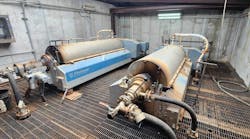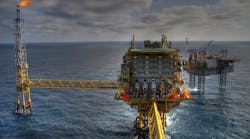During much of Mark Lambert’s childhood he spent time moving to different homes wherever his dad was assigned work. It wasn’t until he was 13 years old that his family finally settled down in Northern California near the San Francisco Bay. There, Lambert began his journey to becoming a leader in the water industry.
After high school Lambert entered the University of California, Berkeley (CAL). He says even then he wasn’t sure what he wanted to do for a career and spent time studying philosophy, literature, sciences, etc. before deciding chemical engineering was the path for him. “I was fascinated by the processes associated with chemistry and manufacturing and how it all impacted our lives,” he recalls.
During his time studying the manufacturing process, he became intrigued with water, noting that it is the source of making anything.
Jumping into the water industry
Upon his graduation from CAL, Lambert’s first job was with Nalco Chemical, which he says is affectionately known as “Water University.” There he was a district field representative calling chemical, steel and petrochemical industries selling boiler feed water, cooling water and process solutions chemistry.
“I spent most of my time learning where the water goes and how it is treated for use in manufacturing and support of all of these important industries,” he says.
Now Lambert is the CEO of IDE Americas, which is a subsidiary of IDE Technologies Ltd.
“In this role I have P&L responsibility for all of our activities in the Americas (North and South America),” asserts Lambert. “There we are very active in the development of large scale desalination projects, including supporting the mining industry, the petrochemical industry, oil and gas production, power generation and, of course, drinking water.”
IDE is a global technology and service provider specializing in desalination technology. It has over 400 installations in 40 countries worldwide and is one of the only companies to offer both thermal- and membrane-based technology.
Outside of his duties for IDE, Lambert is also a member of AWWA, WEFTEC, IDA and WQA. “I was a founding member of the WQA Global Assembly some 20 years ago and have tried to remain active in several industry trade associations,” says Lambert. “I strongly believe that these associations are critical to the water industry as they track growth, advocate for the industry and its members, invest in R&D, education and help guide the policy decisions of this dynamic industry. I encourage attendance at the industry trade shows as this is a wonderful venue to meet old colleagues and meet new people entering the industry perhaps for the first time.”
Lambert continues to say that he enjoys his job because of the great people in the industry and because of his consciousness about the environment and water scarcity globally. He adds that it’s “not hard to love this job.”
Challenges and future of the water industry
We are living during a period of time where the value of water is becoming more known and people are realizing that it is the key ingredient for the sustainability of this planet. Lambert refers to this as “The Water Age.”
“Water scarcity and deteriorating water quality are the largest challenges currently facing the industry,” he says. “Finding ways to reduce consumption, seeking new sources of supply, such as our oceans, and utilizing capital in efficient ways are keys to the future.”
As someone who believes in water desalination being the key to the future of water, Lambert is very optimistic about its growth in the coming years.
“I believe the industry will continue to grow at a 5 to 6 percent annual rate globally and much faster in the developing world as global population expansion and industrialization drives demand,” he adds.
Lambert is sure that new technology and project delivery methods will be the basis for a sustainable competitive advantage that will allow companies to compete and win.
“Over the past 50 years, the industry has gone through phases of consolidation and then expansion as new markets and new technologies are developed. I believe this will continue to be the case and therein lies the opportunity for entrepreneurs,” states Lambert.


